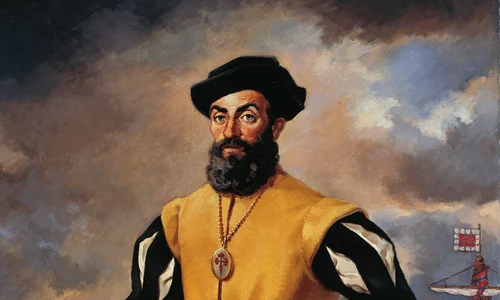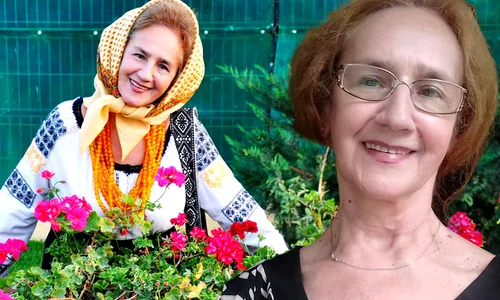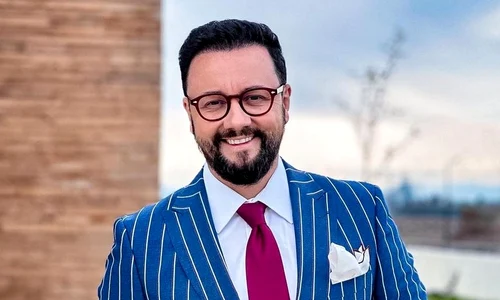
Moscow’s Shadow in the History of Ukraine
Are the Ukrainians pro-Europeans or rather Russophobes? In the 20thcentury, the relation between the Ukrainian nation and the Russian power in Petrograd and Moscow was strained by resentments and violence, even though the Soviet propaganda painted the picture of a perfect Ukrainian integration in the Soviet Union.
In the 19thcentury, romantic nationalism developed in a largely rural territory which was quite similar to other nationalistic movements of the time. Therefore, it envisioned a national renaissance and the establishment of social justice. The painter and writer Taras Shevcenko was the most important figure of this movement, very similar to a Mihai Eminescu of Ukraine. His literary work is considered to be a cornerstone – the starting point for the modern Ukrainian language and literature.
In the First World War, approximately 3.5 million Ukrainians fought alongside the Russian Army and 250.000 were enrolled by the enemy camp in the Austro-Hungarian Army. During the war, Vienna created a Ukrainian Legion which would be the core of the Ukrainian Army that fought against the Poles and the Red Army in Galicia during the terrible years of 1919 – 1923. On the other hand, those suspected of harbouring pro-Russian attitudes were subjected to harsh treatment and thus, almost 5.000 Galician Ukrainians were interned in concentration camps.
Stalin:“Our objective is to eradicate the Ukrainian Fascist Movement”
By the end of the Great War, Empires disappeared and Revolutions soon followed. Certain state structures claiming their Ukrainian origin appeared from the ashes of Imperial Russia. In the eastern territories, a nationalist Ukrainian Republic emerged as well as a Soviet one heavily influenced by the Revolution. In the west, a Ukrainian Republic of the Western Territories (ZUNR) emerged on the lands of the defunct Austria Hungary. However, the ambitions of the Ukrainian nationalists were bypassed by the revolutions, the Civil War and the Soviet – Polish war which ended with the establishment of the Ukrainian Soviet Republic integrated in Lenin’s new empire while Poland annexed the other territories inhabited by Ukrainians.
The Ukrainian nationalists continued their fight in exile for an independent state. In 1929, Yevhen Konovaletscreated in Vienna the Organisation of Ukrainian Nationalists (OUN) which was one of the most active organizations for an independent Ukraine.Konovalets was an important member of the 1920 Ukrainian Military Organisation (UMO) created in Prague. After Poland annexed Western Ukraine, the members of this organization (which was active in Romania as well) set up many assassination attempts against important Polish, Ukrainian and Soviet leaders of the time. The target of an assassination attempt was even the Polish president Jozef Pilsudski.
The newly created UMO inherited these radical fighting methods. Between 1921 and 1939, the UMO and OUN perpetrated 63 assassinations during which Bronislaw Pieracki, the Polish Interior Minister, was murdered. Besides the fact that the Polish Government systematically arrested and followed the Ukrainian militants, the Soviet Secret Services considered their activities extremely dangerous to the existence of the USSR. Therefore, the Soviets did not limit themselves to infiltrate the organisation:on May 23rd, 1938, Pavel Sudoplatov – secret Soviet agent of Ukrainian origin-assassinated Yevhen Konovalets with the aid of a bomb hidden in a chocolate box. Sudoplatov wrote in his memoirs that Stalin personally ordered him the assassination:“it is not just an act of revenge, although Konovalets is an agent of German Fascism. Our objective is to decapitate the Ukrainian Fascist Movement before the war starts.”
The agricultural collectivization of the late 1920s bore catastrophic effects on the majority of the rural Ukrainian population. Even the slightest resistance was crushed by imprisonment and deportation while the Great Famine in Ukraine took its toll on the life of 10 million people. While subjective and objective factors led to it, the Ukrainian Rada defined the tragedy as genocide. Thus, it is quite easy to understand the impact the tragic Soviet experiment had and has on the Ukrainian public opinion.
Extreme Ukrainian Nationalism
After Poland was divided between Germany and the Soviet Union in 1939, the territories inhabited by Ukrainians were annexed to the Soviet Ukraine. During the summer of 1940, Soviet Ukraine was enlarged with southern Bessarabia, northern Bukovina and the Hertza Region as well.
June 1941 saw the beginning of the German – Soviet war and also, the division of the Ukrainian national movements. In 1943, Nazi Germany created the Ukrainian Liberation Army which comprised 50.000 soldiers in 1944 and almost 80.000 by the end of the war when it was reintegrated in the Ukrainian National Army. The Ukrainian National Committee created and controlled the National Army in March 1945. The Army was made up by the ethnic Ukrainians from the number 14 SS Division (14 Waffen Grenadier Division der SS – galizische Nr. 1) plus a division from the ex-Liberation Army and several smaller units.
However, the military wing of the OUN – led by Stepan Bandera who fought for an independent Ukraine – created a Ukrainian Insurgent Army (UIA). Initially, it was active against the Soviets and ethnic Poles, but since February 1943, the UIA started to fight against the German troops as well (the Germans arrested Bandera in July 1941 when he tried to proclaim a Ukrainian state). In September 1944, the Soviet advance liberated Bandera and the Russians provided him and his organisations with arms, equipment and instructors, in order to organise sabotage activities. Yet, because of Nikita Khrushchev’s personal order – who was also a Ukrainian – on October 15th, 1959, Bandera was poisoned to death by the KGB agent Bohdan Stashynsky. Stashynsky fled to West Germany in 1961. According to the sources, the number of those enrolled in the UIA varies between 20.000 and 40.000;other documents suggest that in 1944, the UIA totalled a number of 100.000 soldiers. An UIA commando assassinated on February 8th, 1944, the Soviet general Nikolai Vatutin who was a prominent figure in the Battle of Kursk and the liberation of Kiev. Clearly, the number of Ukrainians who fought in these nationalistic organisations was considerably lower compared to those in the Red Army – a number estimated between 4.5 and 7 million people. The Second World War deeply scarred Ukraine – 5 to 8 million victims including half a million Jews.
After the war, the UIA continued to fight against the Polish regular troops until 1947 and the Red Army until 1949. The UIA resisted in regions such as the Carpathian Mountains, Galicia and in areas in Western Ukraine. However, outside these places, the people supported only marginally the Ukrainian troops since the majority of the eastern Ukrainians were manipulated by the official Soviet propaganda into believing that the UIA was a Fascist organisation and its members were ex-Nazi collaborators. This difference in perception between Eastern and Western Ukraine lingers even today.
Even after 1945, the Ukrainian nationalism was active in exile as well as in the USSR. The last OUN militant was arrested in 1958 at Donetsk. Thus, these 20thcentury bloody conflicts manage to explain, to a certain extent, the tragic escalation of the events in the neighbouring country.



















